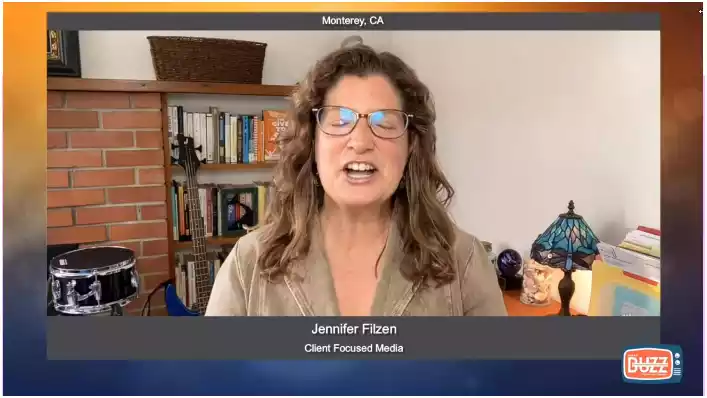Prior Authorization Limitations: Navigating Healthcare's Maze
Discover the key to streamlined healthcare access as we delve into the world of prior authorization limitations. Dive deeper into this critical healthcare process and unlock the path to smoother, more efficient care. Don't miss out – embark on this enlightening journey today!

Grappling with the complexities of prior authorization prescription is a common challenge. Prior authorization prescription involves obtaining approval from insurance companies or healthcare providers before specific medications can be prescribed or dispensed to patients. This process is crucial for managing healthcare costs and ensuring that medications are used appropriately. Let’s delve into the intricacies of prior authorization prescription and equip ourselves with the knowledge needed to navigate this aspect of healthcare effectively.
Let’s get started!
Table of Contents
Navigating the Maze of Prior Authorization Limitations in Healthcare

The complex prior authorization (PA) process is a vital but sometimes overlooked component of healthcare services that requires attention. It’s a significant barrier that affects patients as well as healthcare professionals, causing service delays, administrative difficulties, and occasionally even blocking access to the best therapies. The path from diagnosis to therapy in an ideal healthcare setting would be clear-cut, patient-centered, and direct. The hard reality, on the other hand, is that getting insurance approval for medical operations, treatments, and prescription drugs is a very difficult undertaking.
This narrative will dissect the intricacies surrounding prior authorization, offering actionable insights for healthcare providers to deepen their comprehension of its limitations and strategies to optimize within its confines.
The Underlying Challenges
Getting Through Administrative Mazes
Healthcare providers frequently find themselves ensnared in administrative mazes, oscillating between patient care and voluminous paperwork. According to a 2018 survey by the American Medical Association (AMA), nearly 80% of polled clinicians described PA requisites as ‘very high’ or ‘extremely high’. This cumbersome process entails traversing a multitude of criteria stipulated by insurers, often necessitating comprehensive clinical documentation, justifications for treatment, and extensive waiting periods for approval.
Impact on Patients
For patients, PA can manifest as exasperating wait times, potential disruptions in care continuity, and undue stress. It constructs a convoluted maze of bureaucratic obstacles that can significantly hinder the prompt delivery of medically necessary care. Heart-wrenching anecdotes abound of patients enduring exacerbated health conditions due to delays in receiving essential treatments.
Constraints on Provider Autonomy
From the provider’s vantage point, the myriad of prior authorization requisites can curtail autonomy in decision-making, compelling them to tailor treatment plans more to align with insurance criteria than with individual patient needs. This dynamic challenges the sanctity of a physician’s judgment and expertise, nudging it further under the sway of corporate payer policies.
Deciphering the Regulatory Terrain
State-Level Interventions
Recognizing the burden of prior authorization, a tide of state-level interventions has been gradually sweeping across the United States. Some states have enacted legislation to standardize and streamline the prior authorization process, with the aim of reducing administrative complexity and expediting patient care.
Initiatives Driven by the Industry
Beyond legislative reforms, industry-driven initiatives such as the Prior Authorization and Utilization Management Reform Principles advocated by organizations like America’s Health Insurance Plans (AHIP) advocate for more transparent, evidence-based, and streamlined processes.
Federal Avenues
At the federal level, deliberations regarding potential regulations to reform PA practices are ongoing. These discussions encompass aspects such as enforcing electronic prior authorization (ePA) standards, enhancing transparency, and augmenting accountability within the PA process.
Alleviating the Impact: Provider Strategies
Streamlining Internal Workflows
An increasing number of providers are embracing technological solutions to overhaul their internal PA procedures. Electronic health record (EHR) systems equipped with integrated PA functionalities, automated prior authorization tools, and specialized administrative personnel can substantially mitigate manual overhead and enhance operational efficiency.

Fostering Robust Payer Collaborations
Cultivating collaborative partnerships with payers is pivotal in minimizing PA challenges. Open, constructive dialogues to harmonize treatment protocols, regular updates on practice guidelines, and designated contacts for PA inquiries can significantly smooth the approval process.
Harnessing Data Analytics
Data analytics can furnish invaluable insights into PA trends and outcomes. By scrutinizing approval/denial patterns, providers can tailor their submissions to align with payer preferences, forecast approval probabilities, and strategically address areas for enhancement.
I'm very thankful for Portiva who I know is looking after my practice while I'm gone the virtual assistants can manage prescription refills, documents they can triage patients and just kind of answer administrative questions and they can handle a lot on their own. But also, they're very good about contacting me if there's any emergency or anything I need to attend to. So I'm very thankful for Portiva they can help almost any provider almost anywhere and it really allows for some good work-life balance as I'm getting to experience right now at my family farm so I'm very thankful for Portiva and I'm very happy to use their services"

Board Certified Family Medicine Physician

Portiva's Virtual Medical Assistant - I have all the support I need. There's somebody checking my email, any patient messages. Patients are still able to schedule and handle any scheduling issues and any kind of billing that needs to still go through. Portiva hands handles it all for me. I have support i have somebody that I can access 24/7 pretty much. It's all very seamless. If somebody has an emergency or needs a medication called in. I know that the va's at portiva will handle that for me.

Board Certified Family Medicine Physician

Advancing Towards a Patient-Centric Paradigm
 Educating Patients on PA
Educating Patients on PA
Empowering patients with an understanding of PA can alleviate apprehensions by establishing realistic expectations and furnishing tools to actively engage in the process. Simple elucidations of the PA process, requisite information/documentation, and estimated approval timelines can assuage some anxieties.
Interdisciplinary Care Coordination
Establishing interdisciplinary care teams comprising diverse expertise can proactively manage PA requisites. Shared responsibilities among team members can ensure meticulous organization of every facet of the prior authorization process, leaving no room for oversight.
Championing Systemic Change
Providers wield considerable influence in advocating for systemic reforms in PA practices. Engagement with professional associations, active participation in policy dialogues, and knowledge sharing can contribute to a groundswell of transformation prioritizing patient care while upholding cost containment endeavors.
Paving the Path Ahead
Prior authorization constitutes a complex labyrinth within the broader framework of the healthcare ecosystem. While its constraints may appear daunting, proactive providers are devising innovative strategies to thrive within its confines.
By remaining abreast of evolving regulatory landscapes, implementing strategic operational modifications, and fostering a culture that places patient needs at the forefront, healthcare professionals can chart a course towards a more efficient, compassionate healthcare milieu. The objective is to strike a delicate equilibrium wherein prior authorization fulfills its intended purpose—ensuring judicious utilization of medical resources—without metamorphosing into a barrier to care.
Healthcare providers stand at the vanguard of bridging the chasm between bureaucracy and patient-centered care. The challenge is formidable, yet the potential to positively impact the lives of millions through streamlined, transparent, and efficacious PA processes serves as an enduring beacon guiding the path forward.
Join the movement to revolutionize prior authorization and overhaul healthcare for the better. Together, we can forge a system that prioritizes patients above all else. Let’s materialize this vision, one stride at a time.
Let’s persist in propelling progress and advocating for change in prior authorization. By prioritizing patient needs, nurturing robust partnerships with payers, harnessing data analytics, and remaining attuned to regulatory evolutions, we can pave the way for a more patient-centric healthcare panorama. Every stride towards refining the prior authorization process signifies a step towards enhancing the overall caliber of healthcare in our communities. Let’s collaborate to effectuate this change.
Lastly, let us recollect that while prior authorization might represent a laborious and vexing facet of healthcare, its ultimate function is to serve the common good by ensuring judicious resource utilization and fostering cost containment. By acknowledging its limitations and significance, we can persist in steering towards a more efficient and compassionate healthcare paradigm for all.
To learn more about prior auth checklist that can enhance your medical practice. Discover more about Portiva and unlock a world of possibilities by visiting our homepage today!
- Strategic planning for prior authorization
- Navigating prior authorization process
- Effects of prior authorization on healthcare
- Understanding the prior authorization
- How the prior authorization process works
- Dynamics of prior authorization rules
- Significance of prior authorization
- The essential role of prior authorization
- Advantages of healthcare prior authorization
- How to handle authorization denials
- Streamline prior authorization process
- Managing prior authorization
- Benefits of prior authorization software
- Operating authorization denials
- Simplify patient care with prior authorization
- Monitoring the prior authorization
- Healthcare prior authorization regulations
- Handling prior authorization rejections
- Prior authorization criteria

